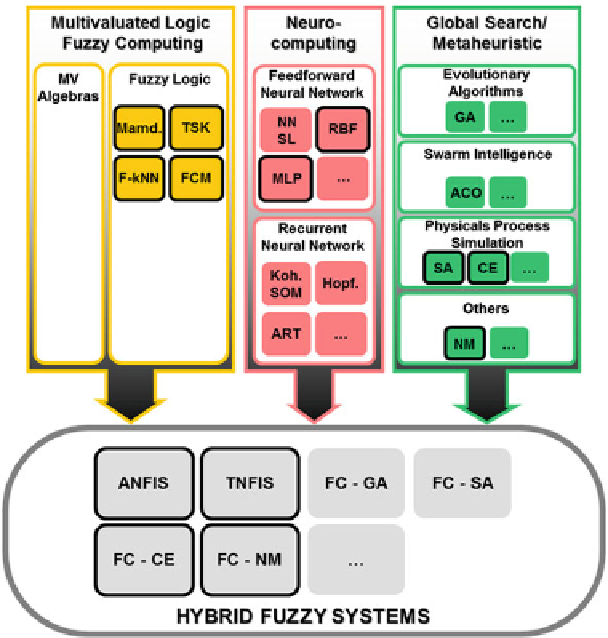Information Technology Reference
In-Depth Information
Fig. 7.1
Some soft-computing strategies for tuning fuzzy controllers.
Notes on the used abbrevi-
ations
.
Mamd
(Mamdani-type fuzzy inference),
TS
(Takagi-Sugeno type fuzzy inference),
K-kNN
(Fuzzy k-Nearest Neighbors),
FCM
(Fuzzy c-means),
NN SL
(Single Layer Neural Network),
RBF
(Radial Basis Function),
MLP
(Multiple Layer Perceptron),
Koh. SOM
(Kohonen Self-Organizing
Map),
ART
(Adaptive Resonance Theory),
GA
(Genetic Algorithm),
ACO
(Ant Colony Algorithm),
SA
(Simulated Annealing),
CE
(Cross Entropy),
NM
(Nelder Mead)
is available, the use of an optimization technique is one of the most appropriate
strategies for optimal tuning of fuzzy and neuro-fuzzy systems.
Figure
7.1
describes some of the strategies proposed in the literature for tuning
fuzzy systems and fuzzy controllers (FC). These strategies are primarily based on
the use of functional approximation techniques and randomized search capabilities
along with the approximate reasoning capacity of fuzzy systems. The hybridiza-
tion and isolated use of these Artificial Intelligence techniques is what is called
soft-computing. This term was coined by Zadeh (
1994
) and covers a wide range
of methods for deigning intelligent systems able to handle more efficiently uncer-
tainty and inaccurate or incomplete information. The figure only shows some of the
components of soft-computing, especially those strategies that will be discussed in

Search WWH ::

Custom Search